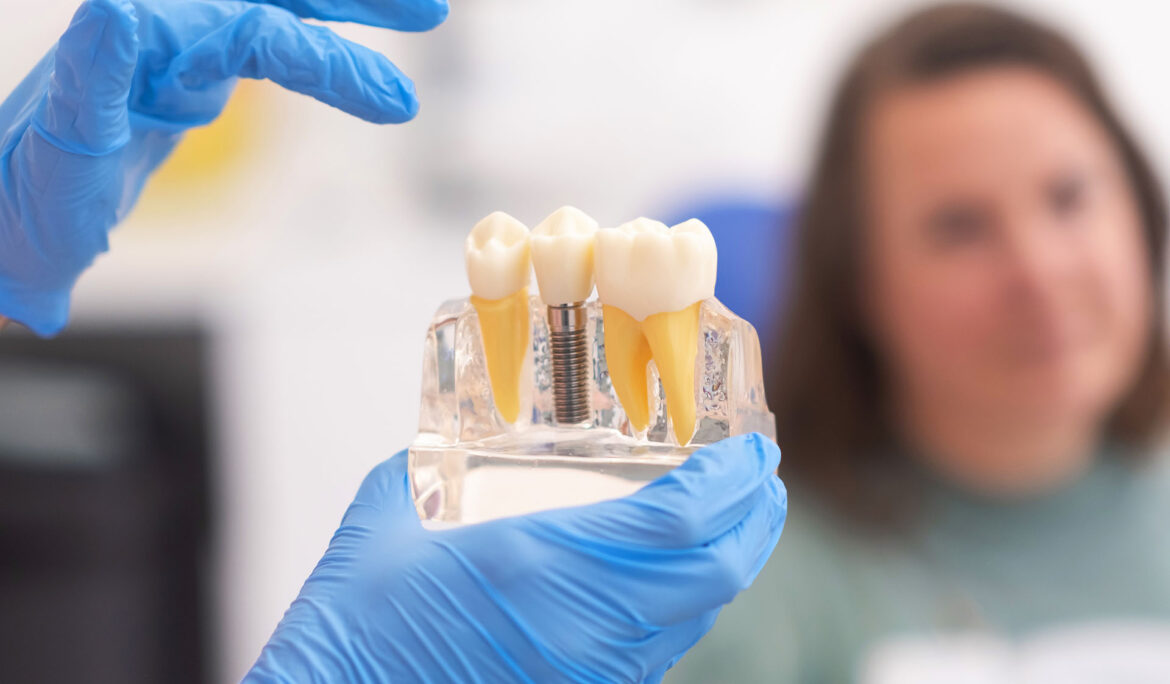Dental crowns, also known as caps, are among the most commonly used dental prosthetic devices in dental clinics. They fully replicate the natural tooth in color and size. Crowns are placed over teeth that have experienced significant volume loss and cannot be adequately restored with fillings, serving as a permanent replacement for the lost part of the tooth. Crowns are permanently cemented onto prepared teeth or fixed onto implants.
Their primary aim is to restore tooth function and aesthetics.
Crowns are indicated when a significant portion of the tooth’s crown is destroyed by decay, when there is a tooth fracture, or when endodontic treatment results in substantial loss of tooth structure. In cases where only cosmetic corrections are needed, without the aforementioned indications, dental veneers may be preferable as they require less invasive tooth preparation.
Materials used for crowns today include:
Metal-ceramic All-ceramic, such as zirconia
Metal-ceramic crowns:
These are one of the most common types of crowns used in dental practices and are considered the gold standard. They have been around for many years. Metal-ceramic crowns are made by covering a metal base, providing excellent strength and elasticity, with ceramic, which provides the aesthetic component of the tooth. Nowadays, metal is entirely covered by ceramic, providing superior aesthetics.
Zirconia crowns:
These crowns closely mimic the transparency of natural teeth and are more expensive than metal-ceramic crowns. However, for achieving greater aesthetics, especially in the esthetic zone, and for single crowns, zirconia crowns are often recommended today. They also offer satisfactory mechanical properties and high aesthetic values. The manufacturing process is also rapid. The only drawback compared to metal-ceramic crowns is the higher cost, and if used for bridges, more than two intermediate units cannot be made.
The procedure for preparing a tooth for a crown is straightforward. The tooth is prepared or treated, if needed, and built up. An impression is then taken and sent to a dental laboratory. Meanwhile, the patient wears a temporary crown. Within a day or two, the crown is usually ready for fitting. After a trial fit and bite adjustment, the crown can be permanently cemented.
The durability of a crown is 10 years or more. We advise our patients not to bite on hard objects or very hard foods to prevent crown damage. Adequate oral hygiene is also necessary. Many factors can affect longevity, such as bone recession and consequent gum recession, which can cause aesthetic and functional deficiencies in the crown over time.
Good oral hygiene is essential for maintaining the beauty and longevity of the crown.
If you have fillings that constantly fall out or are not aesthetically pleasing or functional, please visit us for an examination. You may be a candidate for a dental crown.














1 Comment
affilionaire.org
I am extremely inspired along with your writing abilities as smartly as with the layout in your blog. Is this a paid subject matter or did you customize it yourself? Either way stay up the excellent quality writing, it’s rare to peer a nice weblog like this one these days!